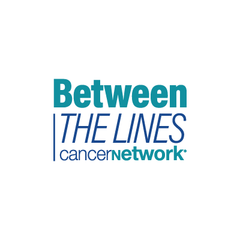
Unmet Needs and Future Directions in CLL
Drs Bishop and Bank close by outlining remaining unmet needs in CLL, emerging regimens, and hopes for the future of care.
Episodes in this series

Michael R. Bishop, MD: What unmet needs remain in chronic lymphocytic leukemia [CLL]?
Bruce B. Bank, MD: I’ll tell you something that you may have heard me talk about before. This trial wasn’t guilty of it, but many trials for CLL are a little guilty of focusing on data regarding what’s strict molecular complete remission [CR] vs clinically relevant complete remission, and all these bone marrows are done and this and that. For me, the unmet need is to be able to use the criteria from bone marrow studies, if they’re in strict molecular remission, to guide therapy. Can we stop therapy for those patients?
Michael R. Bishop, MD: Wow. Great point.
Bruce B. Bank, MD: Because until then, I’m not sure I need that information to determine therapy. We all know when a patient is doing well without knowing the pathology results. That would be a very helpful step. I have at least 1 patient I can think of, whom I met for the first time about 23 or 24 years ago in the late 1990s. He came in with a pretty rip-roaring CLL. He took himself to [the University of Texas] MD Anderson [Cancer Center] to see Dr Susan O’Brien when she was still there. Then they were of course using FCR [fludarabine, cyclophosphamide, rituximab], so we did FCR. This is 20-something years later, and he’s completely disease-free.
Most people in academics whom I’ve spoken to about this agree that there’s a small percentage of these patients who may be curable, even though the old teaching isn’t that. I’d like to know the criteria. Just like with these patients who’ve been on ibrutinib for 5 years and are in CR, I’d like to know whether we could even stop the ibrutinib.
Michael R. Bishop, MD: That’s an important question. Susan would agree with you about the FCR data, how important it is, and patients she has going for a long period of time. The most common question I get from my patients is, “Can I stop the drug? Why do I have to take this forever?” I always say, “It’s like you’re going to take the wrench out of the gears and the gears will start turning again.” But it would be nice if we could have some guided-therapy drug holidays and use the data you referenced to guide us in future things. This is a great time for patients with chronic lymphocytic leukemia. We know there are going to be more agents and combinations that we can use for them, and I believe CAR [chimeric antigen receptor] T cells are going to play an important role. This is a good time.
Bruce, thank you. I knew you would be a great collaborator on this and have very pertinent points. You made my job very easy. Thank you for your participation. I want to thank everybody for joining us. If you’re interested, this was published in JCO [Journal of Clinical Oncology] in 2021. The first author is [John] Byrd, and the reference is in volume 39, page 3441. Thank you all. I look forward to doing this again.
Bruce B. Bank, MD: Thank you very much. It was a pleasure. I appreciate it.
Michael R. Bishop, MD: Take care.
Bruce B. Bank, MD: Thank you. Bye-bye.
Transcript edited for clarity.
Newsletter
Stay up to date on recent advances in the multidisciplinary approach to cancer.


































































































